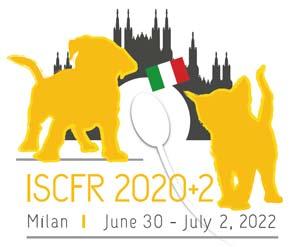Get access to all handy features included in the IVIS website
- Get unlimited access to books, proceedings and journals.
- Get access to a global catalogue of meetings, on-site and online courses, webinars and educational videos.
- Bookmark your favorite articles in My Library for future reading.
- Save future meetings and courses in My Calendar and My e-Learning.
- Ask authors questions and read what others have to say.
In vivo and in vitro Decidualisation of the Canine Uterus
F.R. Graubner, S. Aslan, M. Findik...
Get access to all handy features included in the IVIS website
- Get unlimited access to books, proceedings and journals.
- Get access to a global catalogue of meetings, on-site and online courses, webinars and educational videos.
- Bookmark your favorite articles in My Library for future reading.
- Save future meetings and courses in My Calendar and My e-Learning.
- Ask authors questions and read what others have to say.
Read
Canine reproduction is hallmarked by several species-specific endocrine regulatory mechanisms. Among the most peculiar ones is the lack of luteolysis in absence of pregnancy. This, together with the lack of placental steroidogenesis, results in similar profiles of circulating luteal steroids in pregnant and non-pregnant dogs. Consequently, only following placentation, relaxin of fetal origin can be used as a reliable marker of pregnancy. Consequently also, in contrast to livestock that maintain ovarian cyclicity due to periodic production of a uterine luteolysin, the dog lacks the classical mechanisms of maternal recognition of pregnancy. Nevertheless, in the dog mechanisms preventing embryo rejection must exist to allow successful establishment of pregnancy. Driven by this assumption, recently we have studied the response of the canine uterus to the presence of freefloating (pre-attachment) embryos(1). Differential expression of early decidualization markers was identified, e.g., IGF2 and ER. The expression of IGF1, its receptor IGFR1, ER and progesterone (P4) receptor (PGR) remained unaffected by the presence of embryos. Whereas prolactin receptor (PRLR) was upregulated, there was no or only weak PRL expression(1). Significant upregulation of selected prostaglandin family members was also noted, e.g., PGE2-synthase and PGF2-synthase (AKR1C3) and their receptors (PGFR and PTGER2)(1). Additional functional terms and factors revealed by our microarray studies include 433 genes differentially expressed in early canine uterus in response to pre-attachment embryos. The strongest over-representation was found for terms related to inflammatory response, positive regulation of cell motion and migration, cell signaling and extracellular matrix (ECM) remodeling. Consequently, the expression of selected ECM proteins was investigated. The expression of ECM1, TIMP2 and -4 was positively modulated by presence of embryos, whereas fibronectin 1 (FN1) was negatively affected. None of the major collagens (COL1,-3,-4) were influenced by presence of embryos. It was therefore concluded that functional modulation, but not the initiation of morphological changes, is the main objective of the early embryo-maternal crosstalk in dogs. Following implantation and placentation, the more intimate feto-maternal communication is being established, characterized by formation of maternal stroma-derived decidual cells. These are the only cells of the canine placenta expressing PGR, and the only cells, which together with maternal vascular endothelium are able to resist trophoblast invasion. Interfering with their function, e.g., by applying a selective PGR blocker, unequivocally triggers a luteolytic cascade resulting in a (pre-term)luteolysis(2). For better understanding of the biology of decidual cells, an in vitro decidualization model of canine stromal cells has been established and functionally characterized, providing us with a valuable tool for more detailed future studies on the underlying molecular and endocrine mechanisms(3). To bypass the senescence effects observed with primary cell cultures, in our still ongoing project, immortalized canine uterine stromal cell lines were successfully developed.
Get access to all handy features included in the IVIS website
- Get unlimited access to books, proceedings and journals.
- Get access to a global catalogue of meetings, on-site and online courses, webinars and educational videos.
- Bookmark your favorite articles in My Library for future reading.
- Save future meetings and courses in My Calendar and My e-Learning.
- Ask authors questions and read what others have to say.
About
Affiliation of the authors at the time of publication
Institute of Veterinary Anatomy, University of Zurich, Zurich, Switzerland;
Department of Obstetrics and Gynecology, Veterinary Faculty, Near East University, Nicosia, Turkey;
Department of Obstetrics and Gynaecology, Faculty of Veterinary Medicine, University of Ondokuz Mayis, Samsun, Turkey;
Section of Small Animal Reproduction, Clinic of Reproductive Medicine, Vetsuisse Faculty, University of Zurich, Switzerland. [email protected]



Comments (0)
Ask the author
0 comments